#art criticism
Text

An absolutely killer quite from Harper Jay in this article from Aftermath.
553 notes
·
View notes
Text
How compliments feel sometimes.

#artists on tumblr#art critique#art criticism#fnaf sun and moon#sundrop#daycare attendant sun#fnaf sb sun#dca sun#fnaf sundrop#fnaf sun#fnaf sunny#dca fandom#dca
299 notes
·
View notes
Text

Peter Hujar
Gary Indiana Veiled (detail) (1981)
Courtesy of Pace/MacGill Gallery, New York, and Fraenkel Gallery, San Francisco; © 1981 Peter Hujar Archive LLC
294 notes
·
View notes
Text
The problem with asking if games are art is that the answer can be as simple and as complicated as you have time for. In some sense, anyone trying to be stingy about what qualifies as art is fighting a battle that was decided a long time ago. Today, anything can be art if you're willing to give it your attention and let it move you.
The more interesting question when it comes to tabletop games is, which art are you talking about?
The most common is the art in the books - beautiful illustration and beautiful writing that makes an RPG book an “art book”. I was recently posting on the site formerly known as twitter about how momatoes’ ARC was a work of art. As evidence, I posted screenshots of the PDF. The pages were filled with art, words, and layout that was dark but not scary, a kind of modern fairytale aesthetic that hints at hidden depths. Like a sculpture where marble looks like cloth, it's a feat of technical skill that can both humble and inspire you.
Then, there's the art of playing RPGs. This is a tricky one because there’s lots of things this isn’t: this isn’t acting, this isn’t the same as performing in an actual play. It’s adjacent to performance but not exactly the same and its importance varies across playstyles. But if comedy is an art, then people are busting their gut laughing in their games. If drama is an art, well, often it’s much more moving when someone you know adds the slightest quiver to their voice than when someone in a movie bursts into tears in the rain as a violin plays in the background. Sometimes its just knowing who or when to pass the ball to, and doing it deftly.
And then, there’s the art of design. Which I think Robin Laws referred to as “the hidden art”, though that is probably a little controversial. It’s not exactly writing, it’s more about what or how to write. It’s not exactly the sum total of everything that goes into a book. In some games, the bulk of the design is just the premise. The rest is left to the players. In some games, it’s carefully choreographed ritual. Eithery way, like all art, most of it will leave you cold but some of it can grab you and change you.
(This was originally published in the indie rpg newsletter.)
154 notes
·
View notes
Text

I'm not satisfied with my coloring or shading 😭
Here's my attempt at throwing anything on the canvas
If there's anything you like or dislike in these PLEASEJDG tell me
And you have any tutorials please do not be shy 🤲 share
#art critique#art help#please help#pls help#help with art#dying#dogday save me#dogday#help me with art#constructive critism welcome#constructive criticism#art criticism
82 notes
·
View notes
Text

Okay, before I can give my input about this trailer, lemme just ask. Who drew Vaggie sitting like that, lol!! I'm sorry it's just . . . .everytime I look at this screenshot and can't help but look at her and be bothered. I get that she's supposed to be leaning forward with her legs apart when she's sitting, but they just did it wrong.
I feel like I wanna fix this . . . .
81 notes
·
View notes
Text
Try to guess who my favorite hazbin hotel character is
(Level: IMPOSSIBLE)

#hazbin hotel#hazbin hotel husk#hazbin hotel fanart#he's my little meow meow#also i'd love some critic for the colors and shading#art criticism
48 notes
·
View notes
Text
Of course, museums do not produce art; neither do they distribute art. They sacralize it. It’s important to underline the connection between property and the sacred. To sacralize is to exclude; it’s to set something apart from the world, whether because it is sacred to an individual (“private property”) or sacred to something more abstract (“art,” “God,” “humanity,” “the nation”). Any revolutionary regime changes existing forms of property, and the organization or reorganization of museums plays a crucial role in this process, since the forms of property that exist within museums represent the summit of the pyramid. They are the ultimate wealth that police protect, and that the industrious poor can only see on weekends.
Virtually all museums today operate in a way that produces and maintains hierarchy. By archiving, cataloging, and reorganizing the museum’s space, they draw a line between “museum” quality and “non-museum” quality objects. But there is no ultimate contradiction between commoditized art and art considered inalienable and not to be sold, because they are simply two variations of the sacred as radical exclusion. The fact that these objects are surrounded by armed security and high-tech surveillance simply serves to underline to any visitor how much their own creative acts (songs, jokes, hobbies, diary entries, care for loved ones, and precious mementos) are of no particular significance, and therefore, that visitor will need to return to their non-museum life and continue to carry on their “non-inessential” job producing and maintaining the structure of relations that makes museums possible. Much like the cathedrals they were meant to replace, museums are there to teach one one’s place.
In the same way, the art world—as the apparatus for the production of objects, performances, or ideas that might someday merit being sacralized— is based on the artificial creation of scarcity. In the way that police guarantee material poverty, the existence of the art world—in its current form—could be said to guarantee spiritual poverty. What, then, would an abolitionist project directed at the art world actually look like?
David Graeber and Nika Dubrovsky, "Another Art World, Part 3: Policing and Symbolic Order" (2020)
589 notes
·
View notes
Text

March 28, 1956 — see The Complete Peanuts 1955-1958
#peanuts#comics#humor#existentialism#charlie brown#color#art#art criticism#criticism#beauty#aesthetics#philosophy#sky
64 notes
·
View notes
Text
[A critic is] someone who […] loves experience. I think it’s a disposition that comes even before attention to art. It is someone that looks at any phenomena and wants to extend their life by paying attention—by analysis—[by wanting] to juice this aspect of experience for all that it’s worth. Someone who is, in one way, battling death by saying I can extend this moment, and this one, and this one by way of attention. And so the best way to practice that disposition happens to be on art and therefore, [the critic] uses their taste, uses their standards, uses their whole apparatus of judgement, really, to express a kind of joy of being alive at the same time as the thing.
— Vinson Cunningham's response to the question, "What is the work of a critic today?" on The New Yorker's Critics at Large podcast
#Vinson Cunningham#art criticism#The New Yorker#Critics at Large#I've been thinking about this description all day
29 notes
·
View notes
Text
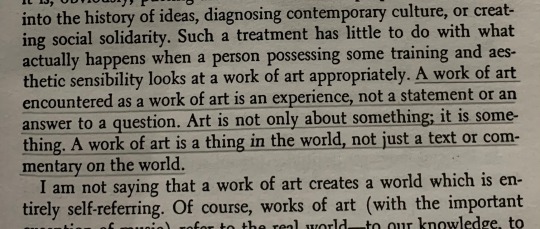
Susan Sontag, On style (from Against Interpretation and Other Essays)
#q#studyblr#bookmarks#susan sontag#morality vs aesthetics#art criticism#against interpretation and other essays
491 notes
·
View notes
Text
+002: The Problem with “Good Game Design”
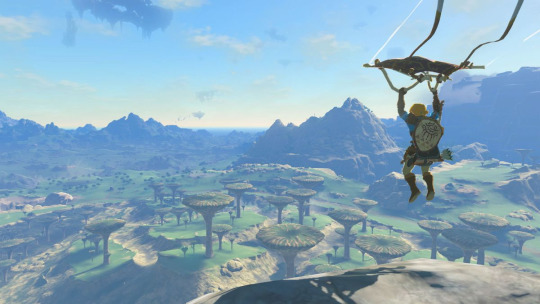
Addendums, Archives and Appendecies is extra, off topic writing in addition to the regular CANON FIRE entries. You can support more writing like this on Patreon.
In games we have a tendency to try and solve everything, to get the optimal, most ideal solution. Sometimes that transfers to how we approach criticism too. There’s an idea that game design is an art that can be perfected, an art that we can test and measure until we’ve achieved perfection.
A million game design essays and industry post-mortems will have you believe that every year we are getting closer to the platonic ideal of the medium. That we make continued progress towards the unspoken agreement of what games should look like.
This is where we get what I call “prescriptive game criticism”.
Prescriptive game criticism goes in with a predisposed set of ideas for what makes a good game. It looks to fit the object of critique into its framework, rather than fit the framework to the object. It overlooks the context and application of why certain choices were made, and the context they were made in.
A prescriptive approach might take the design choices of a successful game, and turn them into lessons to be applied in making other games, or hold them as a standard to judge other games by. It might observe the way one game builds a world makes it successful, despite its simple combat, and see the depth of another game’s combat system, and so naturally combining both would make the ultimate game. Right?
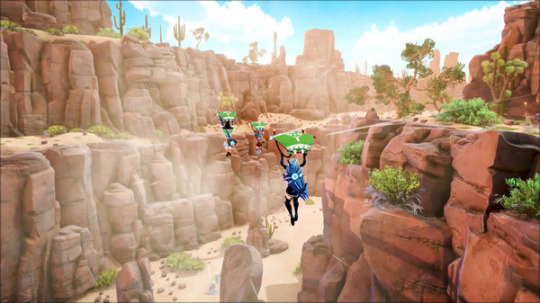
There’s nothing inherently wrong with this sort of theorycrafting, and it’s easy to see why it’s so popular. It’s entertaining, and often even useful, and it gives us a sense that we’re coming to a greater understanding of a medium we love. But often this rigid approach turns into a rulebook of good and bad design, a checklist you use to judge work on terms you’ve already decided on before you started, removed from context and content.
These approaches often unknowingly replicate underlying ideologies. Even a simple statement like “games should award skillful play” dismisses a huge swathe of games and can reinforce flawed ideas of meritocracy. Look at the way that people consider skill at videogames to be a prerequisite for having opinions on them. Or the way the fighting game community will often tell you to settle arguments in a first to three, as if your skill means more to your legitimacy than the content of the argument.

If that still feels like a reach, let’s take a look at the concept of “flow”, which is often used as a measurement for positive engagement and game balance:
As defined by psychologist Mikhail Csikzentmihalyi, flow is a state in which people are so involved in an activity that nothing else seems to matter, achieved when the goals are clear, and there is balance between the difficulty of the task and the skills of the person doing them.
It sounds like game design 101, right? In fact, you’ll find Csikzentmihalyi’s work cited all across game design essays and post-mortems, with many words written on how to induce this state through game design. Jenova Chen, designer and founder of thatgamecompany, even named a game after Flow, and designed an accompanying system to dynamically adjust difficulty, directly citing Csikzentmihalyi’s principles.
Chen specifically draws from the argument Csikszentmihalyi makes in Flow: The Psychology of the Optimal Experience, his most cited work. But for such a frequently invoked argument, the rest of the book presents a disturbing picture.
Csikzentmihalyi presents flow with the framing of a self-help book, as a positive force that can enrich all points of life, as almost a moral good. Among the examples he uses to prove his argument range from the obvious--chess, listening to classical music, playing sports--to the absolutely bizarre--like parenting, factory labor, or even homelessness. No exaggeration.
So if inducing a flow state is a measure of good design, does this mean society is well designed? Wealth inequality?
Incredibly, Csikszentmihalyi seems to believe so! As the book continues he veers into an argument that we should dispense with moral relativism and embrace absolute judgements of which societies are best, with Western society of course being the model, thanks to its meritocratic structure allowing the most opportunity to achieve flow states, and therefore happiness. Even those on the bottom rung can achieve flow here, and those who can’t are simply broken and shouldn’t be factored into the equation.
Again, this is no exaggeration. If anything, I left out a lot of other examples that I found more distasteful.

It’s not as if these underlying ideas haven’t made it into people’s work either. The psychological work done on flow has been used to create exploitative games, and to gamify labor and education to replace real satisfaction with a drip feed of short term rewards, and arguably even influences our interactions with social media.
I say this not because I believe everyone using the term “flow” is cosigning some conservative cultural clash, but to illustrate the assumptions that go unchallenged when we adopt a framework without consideration.
“Good design” sometimes doesn’t look much different than exploitation, and many effective works directly clash with traditional ideas of what a good game looks like. Descriptors like “depth” or “immersion” frequently exclude more feminine modes of play, like dress up or socialization games, which can be rewarding in other ways. Or shut out games that intentionally introduce friction to make it intentionally unpleasant to engage with.
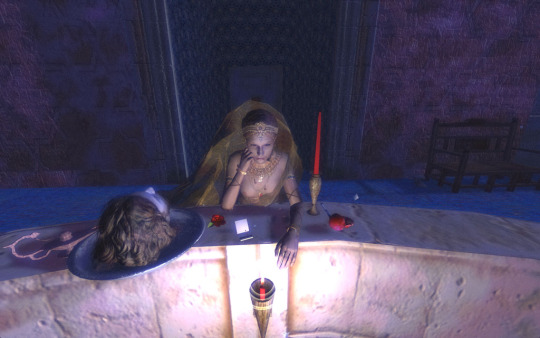
I think fondly about Fatale, the most dreadful, boring 40 minutes I’ve ever spent with a game. It’s nothing but slow movement between points, observing tableaus and reading Oscar Wilde quotes. And yet, years later I still remember it, and the powerful impression it left on me.
Had I been given more freedom to explore the environments and set my own pacing, the whole thing would have fallen apart. The lack of agency, the dreadful atmosphere of the aftermath, IS the point. Fatale strains against our expectations and desires, and it's that friction that gives it thematic weight. Or makes it a total waste of time for you.

Once you begin to break down the assumptions that we’ve made about “good game design”, it kind of breaks the idea that there’s an objective measure for the quality of a game. Which means we have to accept that something that works for us, might not land at all for others, and vice versa.
So if we throw away those prescriptive ideas of what a good game looks like, what’s the alternative?
For me, I like to approach games with what I call a “descriptive” lens to criticism. To be clear, I don’t want to present yet another dichotomy, between the good and bad games crit. Rather, a descriptive approach is one that I think of as widening the angle from a narrow viewpoint to capture a work’s context, intentions, and even our own personalities and worldview.
It requires us to take a look at what a work is doing, why it makes certain decisions and decide if it achieves them within its context and constraints. Or if we even agree with those choices. There are many games I would have enjoyed more if they were designed differently, but that doesn’t mean they’ve fundamentally failed because of it.

To move this out of the realm of the abstract, let’s return to one of those games traditionally excluded from ideas of good game design. Girl’s Fashion Shoot is one of those “games for girls” that are often outright dismissed in conversation. This one in particular lacked a recognizable brand, and was published by a small, niche publisher, and its existence unrecognized by most people. Curious, I played it myself, and I found an interesting cultural connection to a real Japanese teen fashion magazine--hastily scrubbed out of its English release--and found myself challenged by my personal lack of knowledge of fashion styles and movements. It had me thinking about the way I presented myself both physically and digitally.
Structurally and mechanically, the game presented next to no challenge, handing you the tools to success immediately, pushing you forward only with the promise of access to more items you could use to express yourself. Yet it still compelled me, and gave me plenty to chew on emotionally and intellectually.

Working within a descriptive mode means opening ourselves to moments like this, putting aside the ideas we project onto games about what they should be, and looking at what they have on offer, whether they present it with a clear or compromised vision. Ask yourself, what is this work attempting, and are the choices it makes on its journey successful? Look at how it frames itself, what it chooses to include and exclude in its aesthetic presentation. What does it give you control over, and where does it take it away? What worldview does it present, intentionally or not? And how does that collide with our own?
Art can inspire a spectrum of thoughts and emotions, often joyous, but often miserable, terrifying and painful. Chasing a singular idea of “good game design”, one that centers fun, flow states, or mechanical complexity and reward, can rob us of the catharsis of something that challenges us in other ways, that pushes back on us. Sometimes the work of criticism means not only looking at the piece in front of you, but the reflection of ourselves presented within it.
If videogames are truly an interactive art, we need to accept that not only can we influence it, that it can influence us. We need to accept that games are a conversation between us and the work that people have labored to put in front of us. And that means not only speaking about the work, but listening to what it has to say to us.
143 notes
·
View notes
Text
currently trying to design my TOTK OC's clothes, but omfg I'm struggling SOOO HARDDD. I've come to a base design that I like but can't settle on the colors. Criticism and suggestions are appreciated.
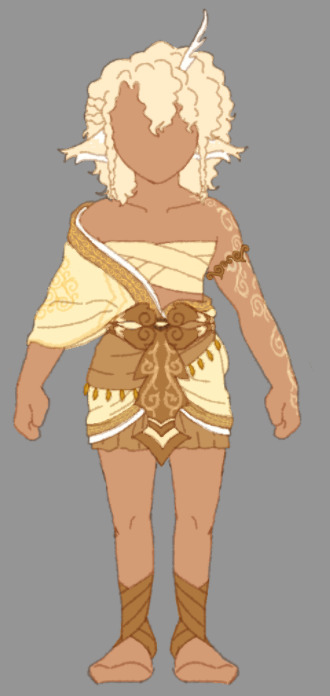



For context, his design is based on the 'Forest Dweller' gear, as his lore is related to its history. He's also a Hylian from the distant past, during Rauru's time, so his clothes follow the fashion conventions of the time.
#art#art help#oc#design help#design criticism#art criticism#clothing design#oc design#totk oc#totk#loz#legend of zelda#tears of the kingdom#legend of zelda oc#tears of the kingdom oc#loz oc
24 notes
·
View notes
Text
Page 849 Reworked
I've been waiting a long time to show this one, and had to adjust some stuff cause the author thought rushing to place an out of place fog would make things better, but just adds on the confusion of a fog only showing around their and not around the area.
Also would've had a scene of them going through the fog and we seen the Two tribes coming in through the fog. This would've been a better battle and advantage CAUSE LET ME REMIND YA. There are two tribes band together to take down Meteor tribe and a few of Whispervale members. THIS IS A NO WIN BATTLE, Meteor has to be strategic and improvise from a no win scenario.
Ronja and other would've taken advantage of the fog and fought them there and not up the freaking mountains. taken advantage when the elements plus the rain coming down would make it more thick in mist. THE BATTLE SPEAKS FOR ITSELF!!!.

Close-up shots;

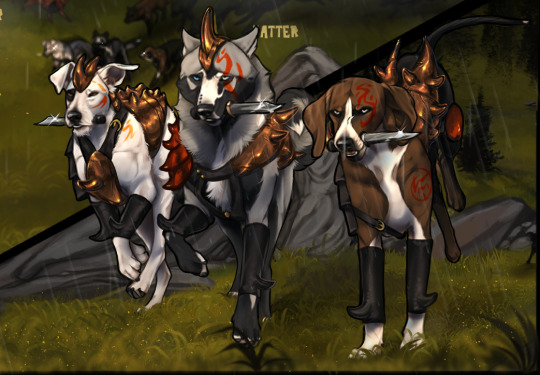
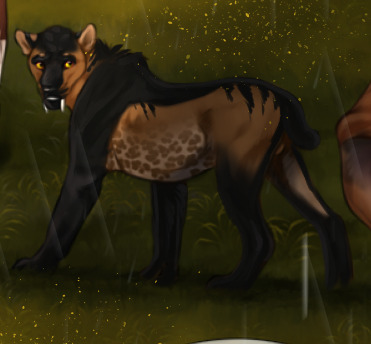
I did adjustment of the whole scene cause this is an action scene;
Panel adjustments and add-ons
Added lighting and shadows
Added SFX
Reworked the BG
Added armor
Added tribal paint
Worked Dialogue bubble cause yikes Ronja.
KARGO HAS PAINT ON BOTH SIDES!!!
He also has the other half of his body.
Adjust to make the dogs more like fur.
Diarko had him more primitive and connect the dark markings.
Also quote from the author themselves; " No paint on any of them for this, it's tedious enough to have to draw all this armor X)"
SO BASICALLY YOU, an author that is drawing a Raiding battle of tribes that is between life and death, doesn't want to do paint nor any detailed important stuff, so we don't know who's fighting who. It's not even battle armor cause None of them ARE WEARING ANYTHING TO PROTECT THEMSELVESM, Meteortribe is more equipped with clothes then the tribes that are experienced not wearing any, they're the one's that say burning bodies is ' primitive '.
let me tell ya after 2-3 pages its laughable on him trying to make this the final boss type BS when they. How these dogs advanced again? ya got literally spirits giving out free loot XD
This is what I mean by ' changing plot to fit the story ' and ' inconsistencies ' like this an annoying blemish, instead of a competent tribes that are more experienced and trained to handle such things, you are NOT given armor nor paint nor anything of an build-up, because you was lazy and don't know how to find an easy way to do said battle armor - PLUS don't know how to have meteor tribe not lose members.
Like, why the heck are the two tribes waited MONTHS to start invading them now why not then??
because kiq. doesn't know how to fix the plot holes, since basically would've been wiped out regardless of the extra protection.
why meteor waited so long to fix their defenses?
why Keirr is not with them, isn't he a family oriented dog.?
Why Rhovanion and Feaf are not their isn't Rhov and family oriented dog?
Why meteor didn't leave around winter and waited many months to move at all? , this is not a vacation, its an evacuation.
why Tribes waited years to actually start something now then 30 years ago.?
Why Roamer wants to take the idea from Kargo which was meant for Kargo, roamer, Ferah to make their ' new life? ' why not just have it where its an idea you made on your own???!!!! really putting salt on that wound ain't ya?
When did Kargo know about Rogio, more then Roamer who is literally his boyfriend?
Why Rogio dumping all the chores on Roamer to do? he's been doing it a lot and somehow Roamer have to agree, cause remember those scenes when Roamer put OUT HIS OPINION??!!! and tried to help? he gotten gaslighted and a upper cut of emotional manipulations.
Why Rogio wants a Polycule now? especially after we SAW Rogio snooping AGAIN on other dogs conversations. and Kargo so far is focused on other things then having a threesome.
and all these glaring and many more glaring questions.
Again the question is why?? why, why and more WHY'S. This stuff usually is dealt with after doing drafts, concepts and revisions.
-----
Ps.
The quick placement of the Fog was laughable, cause think about it like, why kiq. going to do a dues ex Machina on the mountains and not in the fogs. Think about it in a tactical planning for Ronja and writers. The Fog is more an advantage to hide in the thick mist in dark shades of the trees, then being exposer on plan sight on top of a mountain. Meteor ( Nordguard ) 1. does not know how to wield a sword, 2. they're outnumbered, 3. lack experiences and 4. have children. They needed to think strategically and fast.
The fog would've been a perfect scene for them to hide in and cover their scents, Rain and thunder is coming, so more thick fog and cover up from the tribes, they would use that to their advantage and scatter the raid them around. It's a risky maneuver but Ronja can't be hesitant nor meek on this, is all or nothing.
THIS STUFF IS GOOD TENSION AND CHARACTER BUILD-UP.
----
This creating armor and concepts is like whip cream on an ice cream cake for me. But hey it's not my Comic to stress over, be a pump and dump for all I bloody know .
.....
Side Goodies:

Quick Armored concept for Dragonsfall

Dragonsfall Paint marks
The Dragonsfall tribe is a group of Canines who have forged a strong alliance with Fire-breathing lizards, believing themselves to be descendants of these majestic creatures. They are known for crafting a unique bronze metal, believed to be hardened and melted with metal from the scales of dragons. This bronze shines like fire, is harder than regular metal, and exhibits weird translucent colors like the scales. The tribe also molds bits of leather to create softer but sturdier materials. While they may have lost some of the fierce traits associated with dragons over time, certain traits like their scales, reproduction and facials still show hints of their connection to these mythical beings.
---
HAPPY EATING YA BLOGGERS ♥
#home comic#asmundr#kique7#asmundrhome#kique nordin#asmundrcomic#home#kique#bad dog comics#kiquenordin#constructive critism#rework#concept writing#concept art#art edit#consistent inconsistency#inconsistency#comic art#comics#my edit#artwork#art criticism#worldbuilding#bad webcomics#bad writing#bad art#questionable choices#questionable mindset
29 notes
·
View notes
Note
Hazbin hotel is mess because Viv wants it to be both an edgy comedy where everyone’s a horrible jerk but also a heartfelt drama where everyone can improve for the better and aren’t really bad people that covers topics such as abuse and more
I mean, yeah. That's definitely a part of it. Edgelord shit is a problem with media in general, I think. People have this tendency of conflating darkness and misery with realism and maturity but deep down still wanting to tell fundamentally naïve stories about everyone shaking hands and making up despite their differences, so it creates this weird tonal conflict in a lot of works. It's basically artists dressing up stories with superficially mature aesthetics to seem more dignified, even though not a lot of people care about that.
20 notes
·
View notes
Text

To be naked is to be without disguise. To be on display is to have the surface of one's own skin, the hairs of one's own body, turned into a disguise which, in that situation, can never be discarded. The nude is condemned to never being naked. Nudity is a form of dress.
John Berger, Ways of Seeing
#berger#john berger#art critic#quote#the nude#nudity#femme#body#art#artist#aesthetics#beauty#woman#male gaze#naked vs nudity#art criticism#society#culture
134 notes
·
View notes